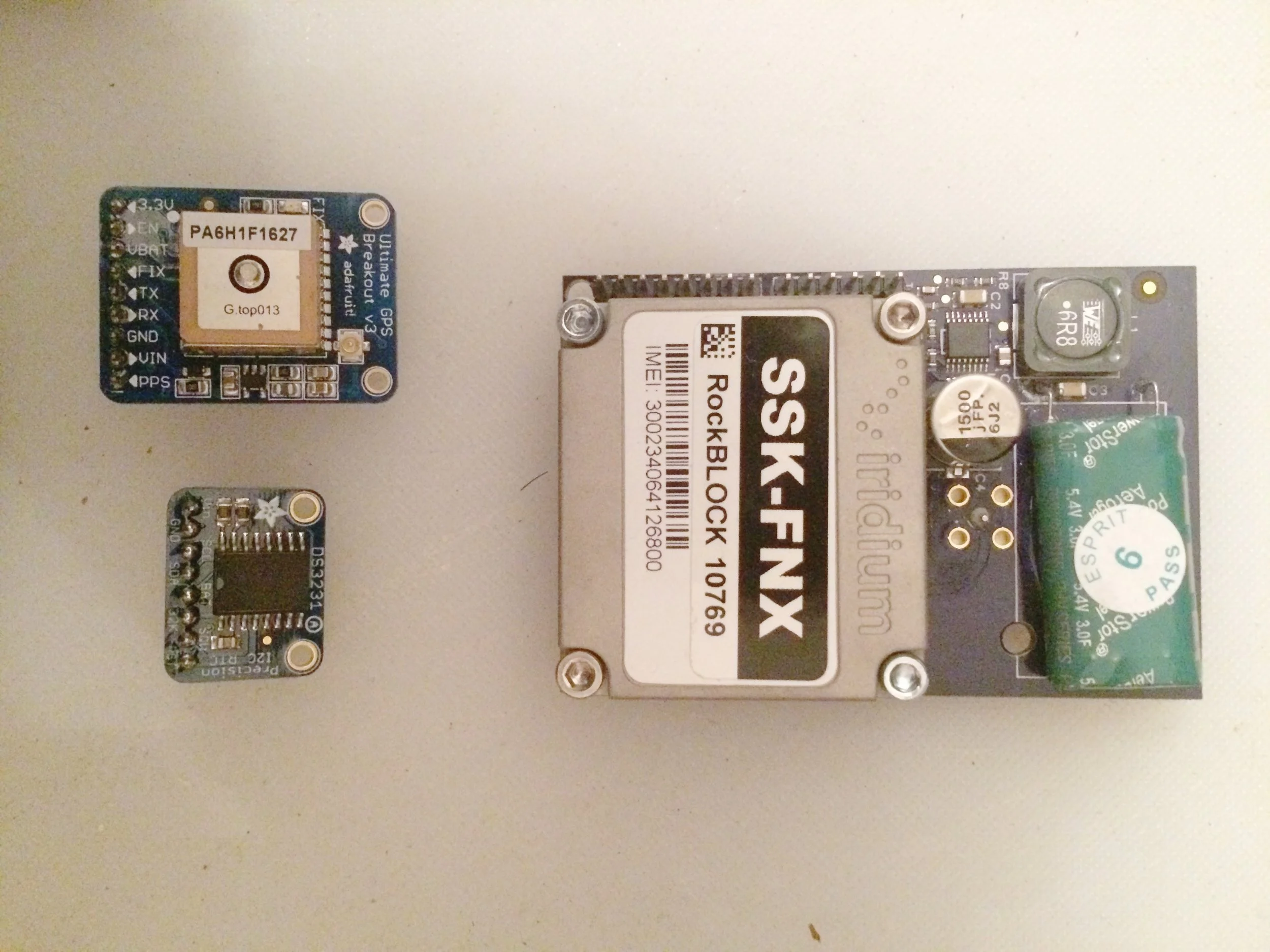Solar Powered Wireless Sensor Node with Satellite Gateway
This project was inspired by the sensor network in my masters thesis, addressing many of the shortcomings and exciting future development possibilities.
Each node has a 6V solar panel hooked up to a solar charging circuit powering a small mAh LiPo battery pack. The battery and the panel are hooked into a buck/boost converter circuit, guaranteeing 5V output whether input is from the 6V solar panel or 3.7V LiPo. The power requirements of the system are broken into two families: the 5V high power satellite communication peripherals and sensors, and the 3.3V low power sensors, microprocessor, and Xbee wireless communication. The 5V group gets its power directly from the buck/boost converter, the 3.3V group uses an efficient switching voltage regulator to convert the 5V from the buck/boost.
The processor is from the AtTiny chip family used in the 3.3V low power Adafruit Trinket series. Sensors are low powered 3.3V digital for humidity and temperature, each sensor has a modifiable reporting frequency. Device receives periodic GPS information on heading and position (useful for remote tracking applications).
Node firmware is written in C and intended for low power, low data rate, long term deployment.
Node communicates with iridium satellite network via rockBlock modem. Data can be sent to web application from sensor node for real time data visualization, or from web application to node for node parameter adjustments.
Experience with firmware development, C language, embedded systems design, circuit design, parts sourcing, hardware debugging/design validation, solar power circuitry, satellite communication, web application development, soldering


